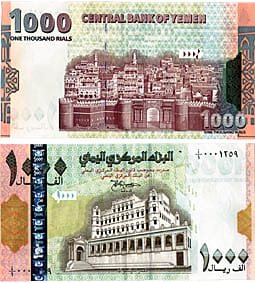
Confidence Building and Performance Improvement Measures Continue: Overhauling the Banking Sector [Archives:1998/38/Front Page]
September 21 1998
Over the last two years, the Central Bank of Yemen, supported by a US $80 million loan from the World Bank, has embarked on an ambitious effort to overhaul the banking sector. What has been achieved is remarkable. What is left to be done is awesome.
“We have proposed a new law which will empower the Central Bank of Yemen to carry out its responsibilities more successfully,” explains Ahmed Abdul-Rahman Al-Samawi, Governor of the CBY. Indeed, the new law will be the cornerstone for a more revitalized and efficient banking sector.

The main stipulations include meeting an 8% capital adequacy ratio for commercial banks, a framework for penalties applicable for infractions, and introduction of better accountability of bank performance especially regarding credit concentration and insider lending. These last two problems have been a major headache for the commercial banks. Board members of banks are their largest borrowers. This was especially visible with the YR 9 billion delinquent loans borrowed by some 15 business households from the Yemen Bank for Reconstruction and Development and the National Bank of Yemen. Failure of those 15 households to pay back their loans has jeopardized the very standing of those two banks.
The CBY has also engaged in many on-site and off-site supervisory activities which have reigned-in many of the bank directors. New requirements include external auditing and new accounting norms, bringing Yemeni banks in line with international standards.
The exchange rate of the riyal remains remarkably stable. The US dollar continues to trade on the open market for a price within the range of YR 130-138. The rate of inflation kept falling during 1996, 1997 and 1998 – to 35%, 21% and 15%, respectively. That, in spite of new issues of high denomination currency bills. The CBY issued, for the first time ever, a YR 200 bill on 11th March 1996, a YR 500 bill on 15th April 1997, and a YR 1000 bill yesterday, on September 20th 1998.
Foreign currency exposure remains, however, a nightmare for the CBY. Although banks have been freed from the constraints of the past, especially in making FX loans, the CBY pays close attention to credit risk management. Banks will have to build their net foreign positions before they can seriously engage in foreign exchange lending. The CBY itself has piled up its foreign reserves, now estimated at US$ 1.5 billion.
Problem banks have yet to be fully dealt with. These are in two lots – the specialized banks (industrial bank, agricultural bank, and housing banks), and the two commercial banks controlled by the state – the National Bank of Yemen and the Yemen Bank for Reconstruction and Development. Working closely with IMF experts, an action plan for the specialized banks is in the works, and could be adopted as early as next week. Debtors of the two commercial banks are being nudged to pay up outstanding loans, and delinquent cases are being closely followed with the courts.
The return of confidence to the national currency as well as to the banking sector in such a short time is remarkable. Yet, the achievements remain fragile and not irreversible. In particular, three important steps are necessary:
1. Manpower Development:
The CBY and banks have to continue in their training efforts. But that is not all. Salaries, especially at the CBY have to be adjusted upwards to retain and attract qualified individuals.
2. Resisting Politics:
The CBY has to continue to grow independently of the Ministry of Finance. To achieve that, legal and administrative reforms are vital.
3. Avoid Scandals:
One of the worst things that could happen to the banking community is an insider-based scandal. There is need to reign in “owners” and board members of commercial banks.
By: Abdulaziz Al-Saqqaf,
Professor of Money and Banking,
Sanaa University.
——
[archive-e:38-v:1998-y:1998-d:1998-09-21-p:./1998/iss38/front.htm]


